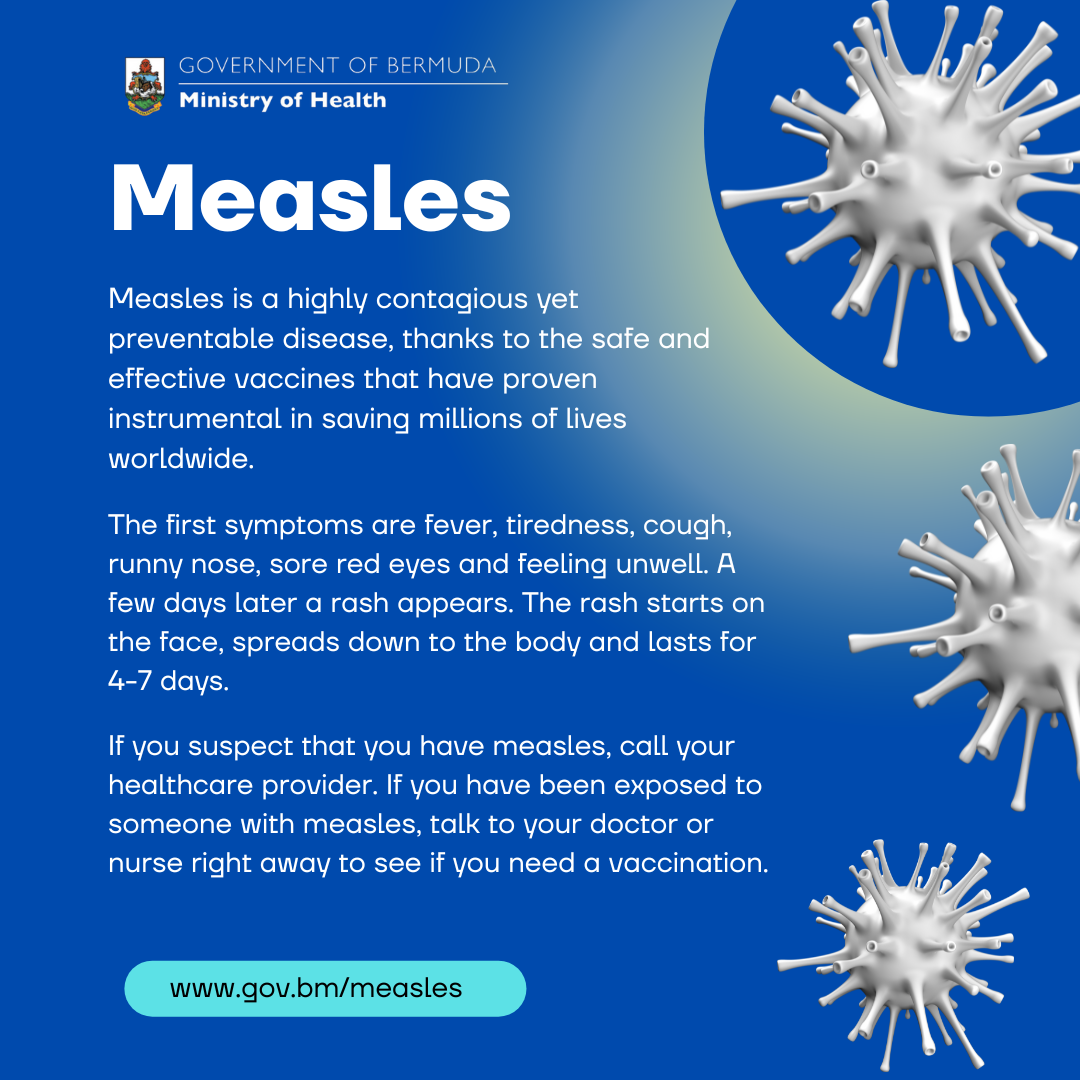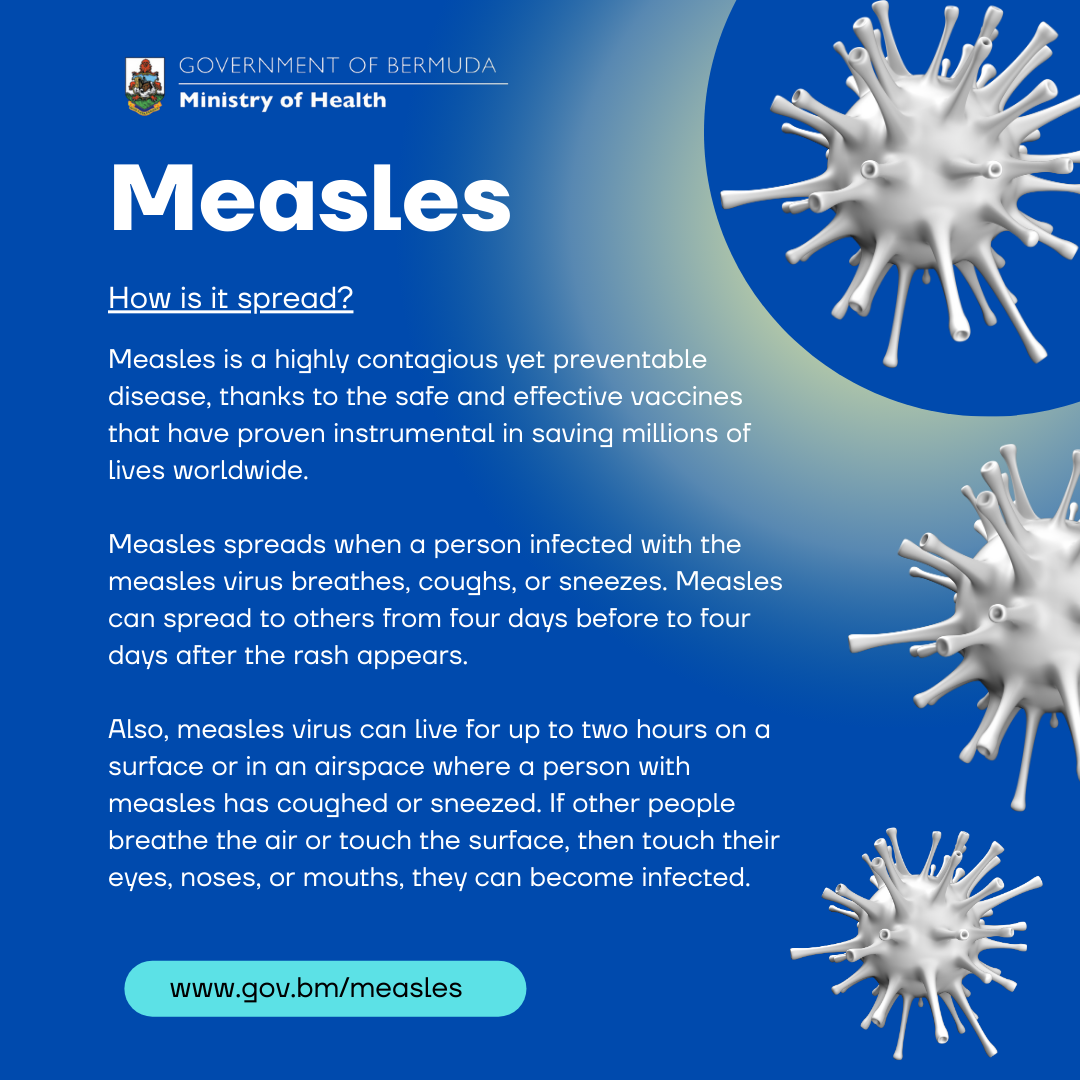Measles is a highly contagious viral disease that can cause serious complications and even death. Symptoms of measles include fever, cough, runny nose and watery eyes, followed by a rash. The measles virus is spread through sneezing, coughing and close contact and can live in a room for up to 2 hours after a person with measles is present.
Vaccination remains the safest and most effective prevention method against the measles virus.
Residents are urged to be aware of their immune status and receive measles vaccination if they are at risk. Travellers, especially, are encouraged to ensure their immunity or get vaccinated before travelling. If you've travelled and experience fever and body rash, informing your healthcare provider of your travel history is crucial.
If you suspect you have measles, seek immediate telephone advice from your healthcare provider before visiting any healthcare facility.
Any suspected case of measles must be quickly recognised and reported to the Epidemiology and Surveillance Unit for prompt public health action to control the spread. Physicians are reminded to immediately report suspected measles cases to the Epidemiology and Surveillance Unit.
The Ministry of Health encourages parents to vaccinate their children against MMR and all vaccines according to the Bermuda Immunization Childhood Schedule. The MMR vaccine protects against measles and is safe and effective. Children should receive the 1st shot at 15 months of age and a booster at 4 – 6 years of age.
If you or your child has not been vaccinated against measles, contact your physician or visit the Child Health Clinic at the Hamilton Health Centre, 67 Victoria Street, Hamilton, or call 278-6460 for more information about all vaccinations.
Measles-Self-Assessment-Form-November-2024.pdf
Click here to download a fact sheet about Measles.



Press Coverage
Ministry of Health Confirms Suspected Measles Investigation | Government of Bermuda
Second Measles Case Confirmed | Government of Bermuda
Urgent Public Health Notice: Measles Case Confirmed | Government of Bermuda
